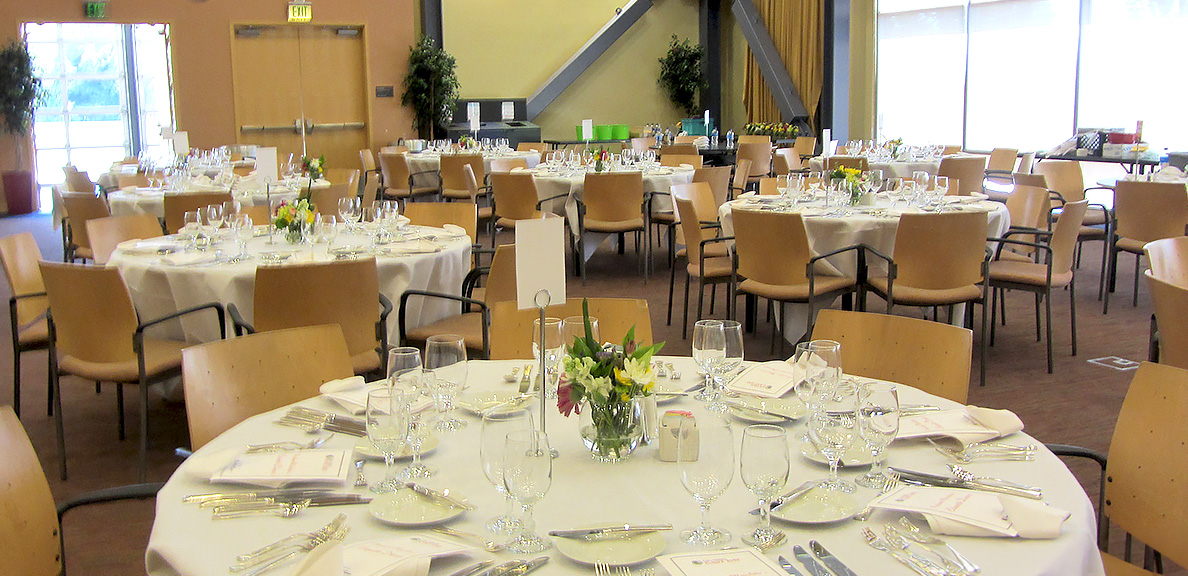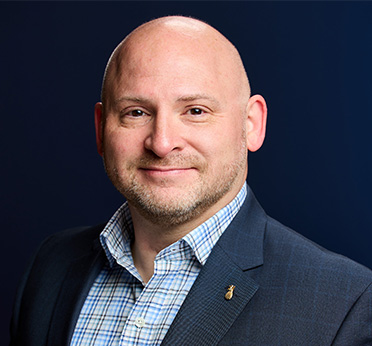
Yes, it’s rude to have your cell phone out at dinner — and more etiquette rules you might be breaking
BY Kimberly Hawkins
March 5, 2024
With the saturation of smartphones and the popularity of dating apps and Zoom interviews, some etiquette has loosened. But, according to Cal State East Bay Professor of Hospitality, Tourism and Recreation Thomas Padron, much of it, like showing good old-fashioned manners, remains the same. If you are feeling a little rusty about the rules governing the dining table, Padron, who has hosted 138 etiquette dinners over the last three decades, is here to help.
On April 11 at 4:30 p.m., the Department of Hospitality, Tourism and Recreation is transforming the New UU multipurpose room into a fine dining experience. Students will learn etiquette minutia while enjoying a free multi-course meal. Padron says this is an opportunity for students to practice their dining skills and communication in a safe space. Click here to register for the dinner.
"I want the students to be comfortable with being uncomfortable. Etiquette is something that is learned throughout one’s life, and this dinner is an opportunity for students to be self-aware of what etiquette dining skills they have and ones they may need to enhance. It is trial and error and the continued process of improvement," said Padron, who was kind enough to offer all of us his best tips in this Q&A.
What are the three most essential etiquette rules at a dinner table?
How you look, how you act and how you speak.
Who should sit down first?
When everyone arrives at the table, they always wait for the host (whoever invited them) to begin to take their seats. If there is no host, everyone should wait until the full group arrives.
When is it okay to begin drinking or eating?
Always follow the lead of the host. This person is responsible for creating a cordial and welcoming environment. They set the tone for the occasion. The host may offer a toast at the beginning of a meal and that will be the signal to begin consuming a beverage. For eating, again, follow the host. It is customary to wait until everyone has their food items before anyone commences eating.
What is an appropriate way to explain a food allergy?
Simply tell the service staff about the food you have an allergy or sensitivity to. They will consult with the kitchen staff to determine appropriate items for you to order and consume and will communicate that.
How do I eat finger foods?
The best case is not to order finger food. If the host orders finger foods, these should be consumed in bite-sized pieces. Many times, finger foods are one-bite items and should be consumed in one bite. At a hors d’oeuvres reception, only take one hors d’oeuvre when a service staff offers. If there is a table of items, take no more than 2-3 items at a time.
Which fork is for what?
There are over 30 different types of forks that can be used for dining. Remember, most all forks are on the left-hand side of your place setting (Tip: there are four letters in the word “fork” and four in the word “left”).
What if I have to sneeze or cough?
For these situations, it is best to use your napkin. After, make sure to request a new napkin from the service staff. If you know that you are consistently sneezing and/or coughing, it is best to not be around others to protect them.
What do I do if I have something in my mouth I need to spit out, such as bone or gristle?
For this situation, you would use your napkin. Request a new napkin from the service staff afterward.
What if I am served the wrong dish or it doesn't taste good?
It is important to communicate the wrong dish or item to the service staff but do not make a spectacle. Graciously ask for the correct item. The same is true for something that does not taste good. When selecting an alternative item, know exactly what you want.
Do I have to try something that does not look appetizing?
You are not required to try anything that you deem unappetizing. Leave the item on the plate where it is. The service staff may inquire if there is an issue with the item and you can kindly let them know that you do not care for the item.
Where do I put my napkin when I leave the table temporarily?
First of all, the napkin should not go on the seat. (You sit there. You would not want to put your napkin to your mouth or face after it has been on your seat.) The napkin should be lightly folded and placed in front of you on the table or on the back of the chair. Note that if you place the napkin on the left-hand side, this will signal to the service staff that you are finished with your meal.
What about my phone? Can I keep it on the table? What if someone calls or texts?
No phones on the table. They should be turned off or silenced. If you need to field a call or text, excuse yourself from the table and go to a location away from the dining area. Remember, if your phone is out, this indicates that it is more important than the person(s) you are dining with. This is not a message you want to communicate.
What do I do if I drop my fork or napkin?
Do not attempt to pick up the item(s). Leave them where they are and request a replacement from the service staff.
How do I signal that I am done with my meal?
Your fork and/or knife are placed in the four and 10 position (on a clock). The tines of the fork will face the 10 position and the handle will face the four position.
How do I eat and answer questions at the same time?
It is inappropriate to talk with any type or amount of food in your mouth. Should you be asked a question while eating, kindly bring your hand to cover your mouth and nod your head. This will signal that you are still consuming food and will answer when you have finished your bite.
How do I know who should pay for dinner?
It is customary for the host or the person who invited you to pay. This does depend on many factors, but it is typically communicated and not assumed. When in doubt, offer to pay for your portion, and if you are in the position, offer to pay for the full dinner.

Cal State East Bay Hospitality, Recreation & Tourism Professor Thomas Padron
Share this story